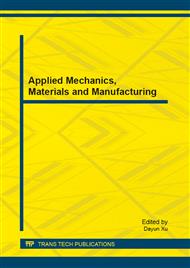p.429
p.435
p.440
p.444
p.449
p.455
p.459
p.466
p.472
Determination for Tool Edge Geometry and Cutting Conditions by Using FEM Simulations and Experiments
Abstract:
Hardened steel, Ni-based alloys and brittle materials are very difficult to machine using conventional cuttingmethods.A tool edge with a small nose radius can alleviate the regenerative chatter. In general, it is important for conventional cuttingto use the smallest possible tool nose radius. A sharp tool shape has an adverse effect on tool strength and the instability of machining process still occurs. A tool wear model with small nose radius proposed by past researchers is evaluated for predicting metal cutting tool wear when machining the copper. Tool temperature values are determined using finite element methods simulation. These temperatures are related to tool wear measured after metal cutting turning tests on a copper workpiece to determine tool edge geometry in low metal tool model.In this study, the effects of cutting conditions and tool edge geometry on process stability in turningare investigated through experiments and FEM simulations.
Info:
Periodical:
Pages:
449-454
Citation:
Online since:
August 2013
Authors:
Keywords:
Price:
Сopyright:
© 2013 Trans Tech Publications Ltd. All Rights Reserved
Share:
Citation:


